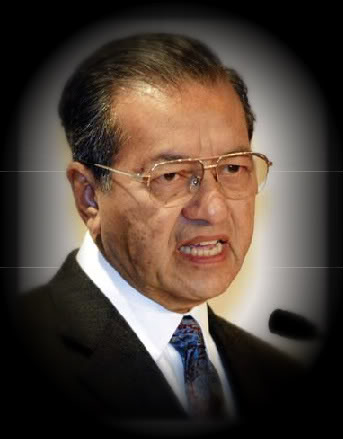Hitler and Mahathir: What you should know of dictators
By G. Vinod, Free Malaysia Today

The title itself is a give-away maybe. Many have written about both individuals on many issues — be it their achievements, their brutal politics and what not. However, the question is, have we actually learnt anything from our history books? Authoritarian figures do not normally fall from the sky. They are made by a gradual process of political manoeuvring, sadly with mass support. The amazing part about authoritarian figures is that most of them normally share the same charasteristics. Take Adolf Hitler and Dr Mahathir Mohamad.
Though both came from two different eras, so many similarities can be seen between the characters. For example, both had strong nationalistic love for their motherland for their own reasons.

While Hitler wished to unite the nation as a military powerhouse, Mahathir wished to unite the Malays and transform Malaysia’s economy to fit the modern age.
When Hitler rose to power becoming Chancellor of Germany in 1932, he instituted many economic reforms that saved the nation’s economy from going bust altogether, eventually turning it into a military economy.
While Mahathir did not inherit a bankrupt economy from his predeccesor Hussein Onn, nevertheless he transformed Malaysia from an agriculture-based economy into a modern industrial-based one. By mid-90s, Malaysia became an economic tiger in Southeast Asia.
Everyone enjoyed economic and social comfort during their reign. Unemployment numbers were low and everyone had reasonable level of disposable income to spend.
Machiavellian politics
In order to consolidate his power, Hitler merged the chancellory office with the presidential office to become the Fuhrer (supreme leader), effectively gaining controlling on crucial state apparatuses such as the military, police, parliament and the judiciary.
While Mahathir did not really remove the Council of Rulers and turned the nation into a republic, he nevertheless made it clear to them who was in charge by stripping the rulers of their immunity and royal assent to pass parliamentary bills in the 80s and the 90s.
Barry Wain aptly described Mahathir in his book “Malaysian Maverick: Mahathir Mohamad in Turbulent Times: “By the end of his 22- year tenure, Mahathir had remade his country in his own image and become Malaysia’s presidential premier.”
His controversial move not only sent shivers down the spines of those still attached to the feudal concept of Malaysian lifestyle, his move also ensured the royalty knew that he will not tolerate any opposition from anyone, rulers included. No one will be in his way of bringing Malaysia into the new age.
Both towering figures commanded respect and fear from their own Cabinet and lawmakers. Hitler commanded even the army to swear an oath of loyalty to him alone, and not to the nation. Dissenters were swiftly put away using the draconian powers he wielded via the Enabling Act 1933, be it opposition members or within his own ranks.
In Mahathir’s era, he controlled the crucial two-thirds parliamentary majority which gives him power to amend the constitution at will. While lawmakers were controlled by the party whip, the Cabinet is bounded by collective decision. In other words, Mahathir became the Cabinet and the Parliament.
Dissenters suffered their wrath to the fullest extent. While Hitler used his Gestapo and the SS to get rid of critics, Mahathir used the state instrument such as the police and the legislation to silence dissenters.
Press freedom was at its lowest in both men’s reign. Hitler as the Fuhrer controlled the judiciary and he became the judge, jury and executioner.

